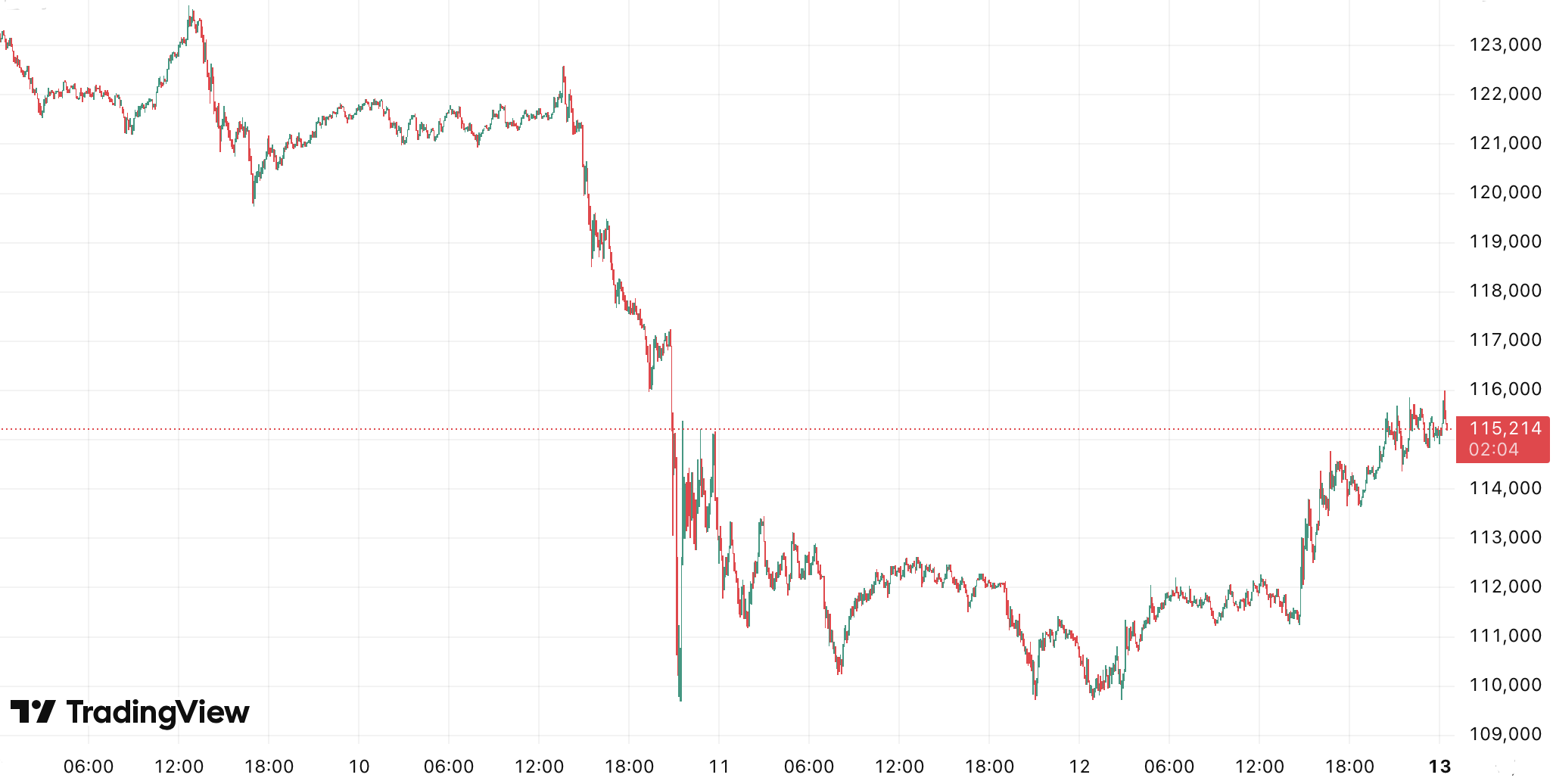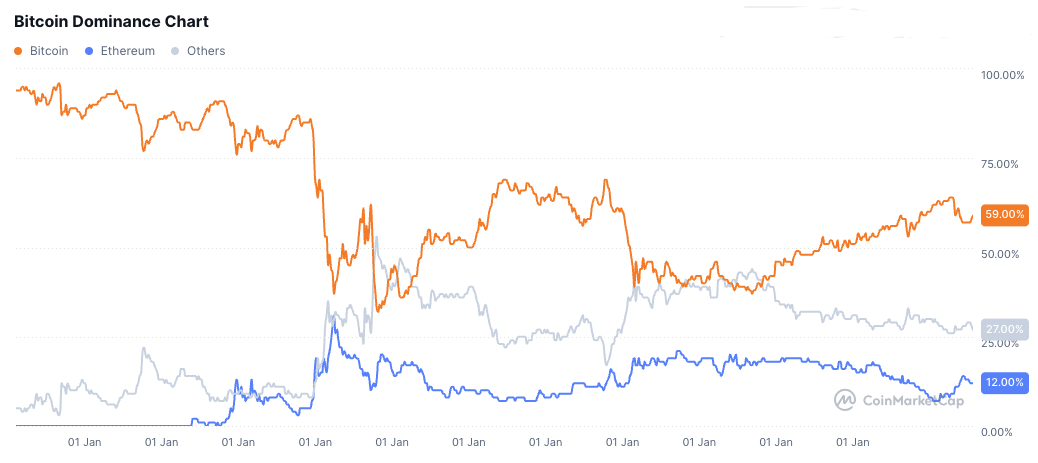Forget stocks, crypto is the big loser right now
Friday may have been the biggest one-day decline for the S&P 500 since Trump's last big tariff volte-face sent stocks tumbling in April, but the bigger story was happening elsewhere.
After Trump threatened 100% tariffs on Chinese goods on social media on Friday, markets went into meltdown, but none more so than the crypto markets.
Where the S&P 500 fell 2.7% and the Nasdaq Composite fell 3.6%, Bitcoin (BTC) dropped around 10% (and more on certain trading platforms) in half an hour.

But that was just the tip of the iceberg. More than US$300 billion was wiped off the total market capitalisation of the crypto markets.
Some of the biggest cryptocurrencies saw precipitous drops. XRP fell 26%, Chainlink fell 40% and Cardano fell 41%. Many smaller coins fell more than 50%.
The sell-off was so bad that some cryptocurrencies effectively (if temporarily) crashed to zero on certain platforms because of cascading liquidations and a lack of liquidity. The cryptocurrency Cosmos (ATOM) crashed from US$3.80 to US$0.01 on Binance, the world's largest crypto exchange.
It was the biggest liquidation event in crypto history, dwarfing even the Covid crash and FTX crash. One of the biggest issues is it's not clear exactly what caused the crash.
Some point to suspicious shorts being placed on decentralised crypto exchange Hyperliquid in the lead-up to Trump's announcement, suggesting insider trading. That investor ended up pocketing more than US$160 million in less than a day.
Others point to what look like coordinated attempts to "de-peg" certain trading markets, which in turn liquidated leveraged positions on other markets which were using the assets affected by the depeg as collateral. That has also rightfully garnered suspicions that exchanges, including Binance, may have used the crash as an opportunity to liquidate customers who otherwise had done nothing wrong.
While the post-mortem is still ongoing and likely to uncover a few big-name casualties (like the fallout of the collapse of crypto exchange FTX back in 2022), it's revealed some uncomfortable truths for the sector.
It's increasingly apparent that Bitcoin, and arguably Ethereum (ETH), are the only true "blue chip" cryptocurrencies. While there are a handful of larger cryptos below those two, the rest of the crypto market performs more like penny stocks than an established stock market.
And now the curtain has been pulled back on a market that has been trading on little more than air, propped up by leverage and market makers. There is little organic interest in those hundreds of other cryptocurrencies now vying for the same dwindling liquidity and investor interest.
It looks like something of a reckoning for the wider crypto market at a time when the stars seemed to be aligning. We're in the midst of an "everything" bull run, an ongoing rate-cutting cycle, and most importantly, the most crypto-friendly administration in US history.
If crypto was ever going to prove its worth, the time would be now. Instead, the disconnect between Bitcoin and Ethereum and the rest of the crypto market couldn't be starker.
Given the lack of fundamentals driving the crypto markets, it has often followed a "rising tide lifts all boats" trend. As Bitcoin increases in price, it pulls the rest of the crypto market up with it, as investors rotate profits from Bitcoin or look to chase opportunities promising higher returns.
It's not dissimilar to the rotation often seen in stock markets between mega caps, mid caps and small caps, albeit driven much more by speculation and less by any cyclical or fundamental trends.
Crypto ex BTC/ETH now accounts for just 27% of total crypto market capitalisation. It represents a 3-year downtrend from late-2022 when it represented almost 45% of the total market cap.

So while Bitcoin especially enjoys its new status as institutional plaything and digital gold, the rest of the market is running on fumes.
It may be AI that is drawing all the Dot-com comparisons right now, but that title really belongs to the crypto industry. It's an entire technology and sector built on hype and the promise of tomorrow. The difference is this is now a bubble that has lasted for more than a decade and delivered very little.
This latest crash is just another sad chapter in the sorry tale of an industry refusing to mature.
2 topics

